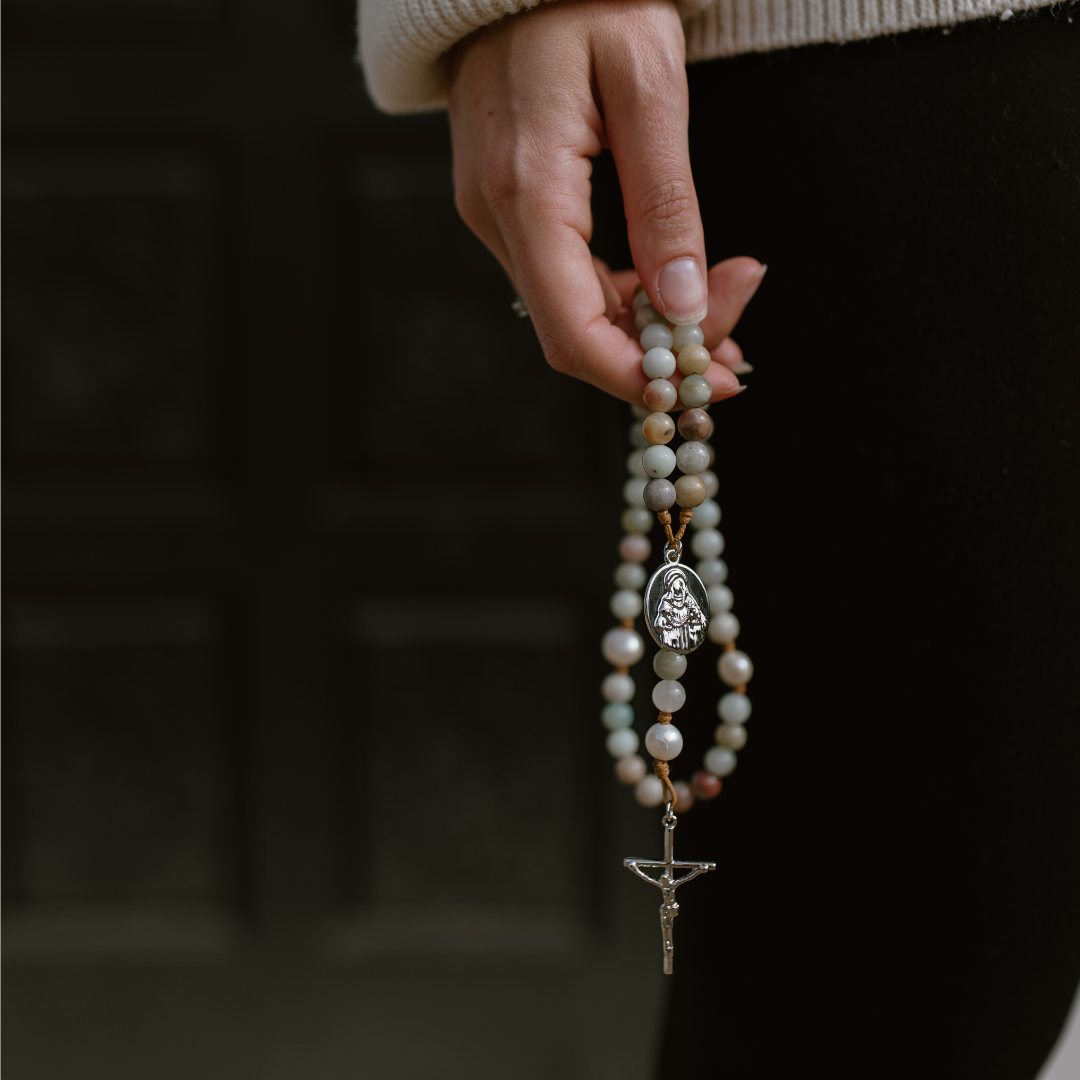If you’ve ever browsed a collection of Catholic jewelry, you’ve probably come across a small oval medal featuring the Blessed Virgin Mary. It’s more than just a beautiful pendant—this is the Miraculous Medal, a symbol of faith, grace, and divine protection that has touched millions of lives since the 1800s.
Whether you already wear one or are just discovering it, here’s everything you need to know about the Miraculous Medal, its meaning, and why it remains one of the most cherished pieces of Marian jewelry today.
The Story Behind the Miraculous Medal
The origin of the Miraculous Medal begins in 1830, when the Blessed Virgin Mary appeared to a young novice, St. Catherine Labouré, in Paris, France. During the apparition, Mary showed Catherine a vision of a medal and asked her to have it made and distributed. Mary promised that “all who wear it will receive great graces.”
Just two years later, the first medals were produced—and almost immediately, reports of conversions, healings, and answered prayers followed. People began calling it the “Miraculous Medal” because of the extraordinary favors associated with it.
The Miraculous Medal Meaning and Symbolism
One of the most powerful aspects of the Miraculous Medal is the meaning behind its design. Every detail carries deep Catholic symbolism:
Front of the Medal:
-
Mary standing on a globe: Symbolizes her Queenship and her role in God’s plan for salvation.
-
Rays from her hands: Represent the graces Mary pours out on those who ask.
-
The inscription: “O Mary, conceived without sin, pray for us who have recourse to thee” affirms the dogma of the Immaculate Conception.
Back of the Medal:
-
The "M" with a cross above: Signifies Mary’s close union with Jesus’ sacrifice.
-
The two hearts: The Sacred Heart of Jesus and the Immaculate Heart of Mary—two great symbols of love and mercy.
-
Twelve stars: Represent the twelve apostles and the universal Church.
Wearing this piece of Catholic jewelry isn’t just a statement of faith—it’s a reminder of Mary’s protection and a daily invitation to draw closer to her Son, Jesus.
The Spread and Power of the Medal
From its earliest days, the Miraculous Medal was embraced by the faithful around the world. Millions were distributed within just a few years of its creation. One of the most famous stories is that of Alphonse Ratisbonne, a staunch atheist who converted after a vision of Mary while wearing the medal.
The Church never treats sacramentals like the Miraculous Medal as magic tokens—but they are signs of God’s grace. When worn with faith, they can become powerful tools for conversion, healing, and comfort.
Why the Miraculous Medal Still Matters Today
In our modern world, where stress, fear, and uncertainty often weigh heavy on the heart, Catholics are rediscovering the beauty and meaning of wearing Marian jewelry like the Miraculous Medal.
It’s:
-
A personal devotion to Mary
-
A visible sign of faith
-
A source of spiritual strength
-
A way to evangelize gently through beauty
Many Catholics wear it on a chain alongside crucifix necklaces, or give it as a meaningful gift for sacraments like Confirmation, Baptism, or even weddings. Check out this beautiful Blessings Necklace.

How to Wear or Gift a Miraculous Medal
You don’t need to wait for a special occasion. Anyone can wear a Miraculous Medal as part of their everyday Catholic jewelry. To make it even more meaningful:
-
Have it blessed by a priest
-
Pair it with a prayer card or booklet
-
Pray the Miraculous Medal Prayer regularly
-
Wear it close to your heart—literally and spiritually
Looking for a heartfelt gift? A Miraculous Medal is perfect for anyone seeking comfort, healing, or a deeper connection with Mary.

Final Thoughts
The Miraculous Medal is more than a piece of metal. It’s a gift from Heaven, a tangible reminder of Mary’s love, and a beautiful part of our Catholic tradition.
So next time you see this special piece of Catholic jewelry, remember its incredible history, its life-changing symbolism, and the countless graces it continues to bring.
O Mary, conceived without sin, pray for us who have recourse to thee.






